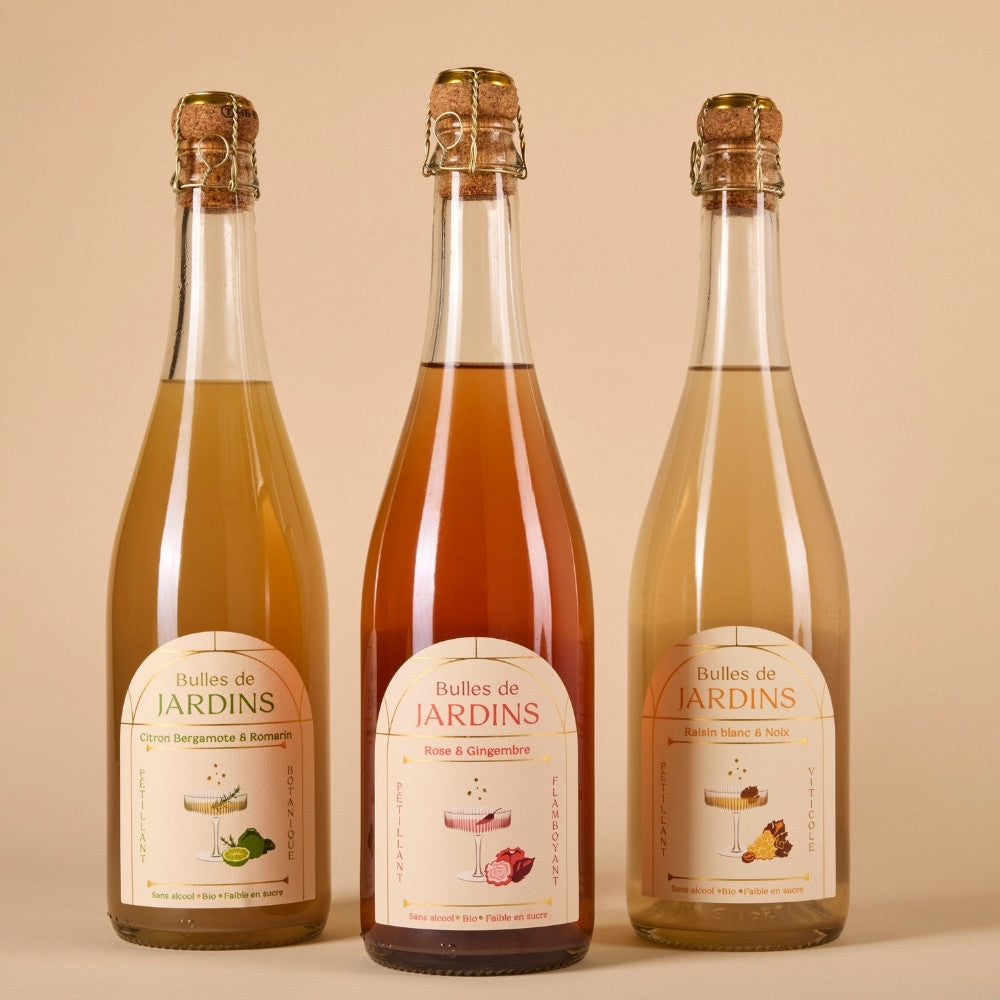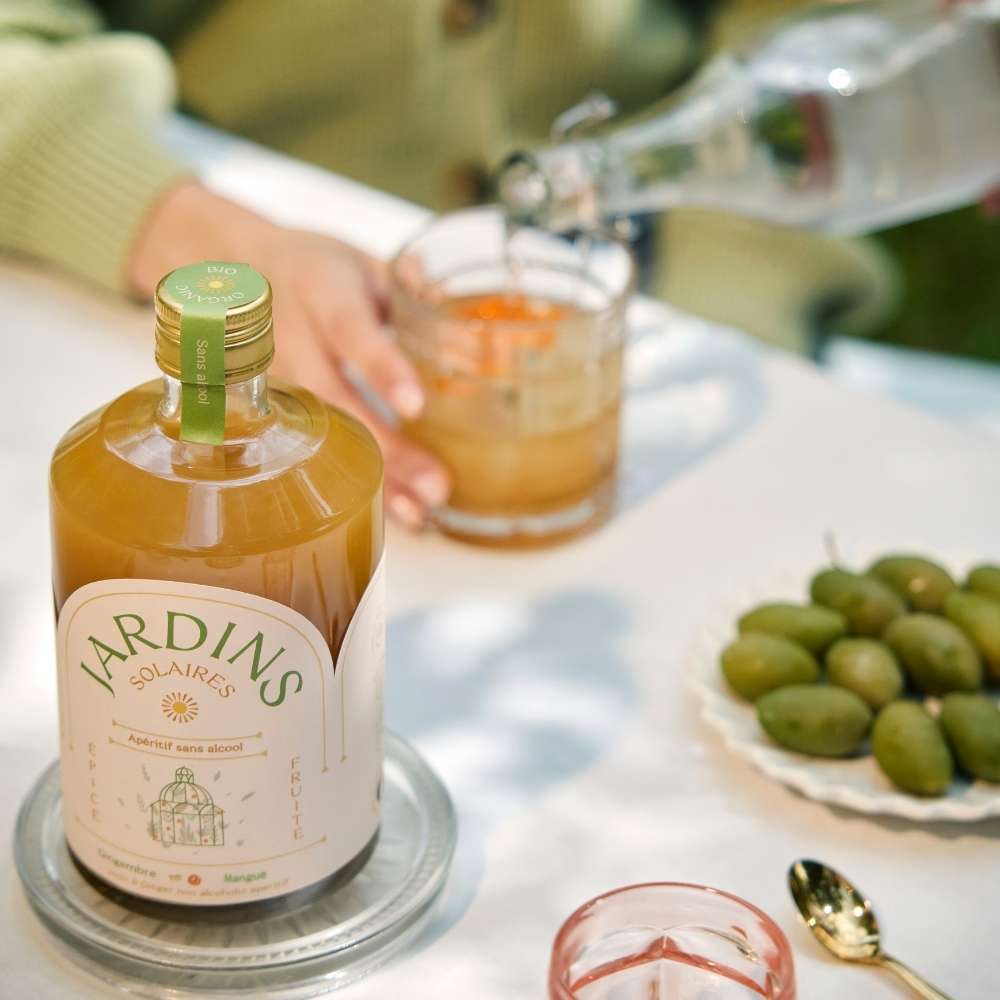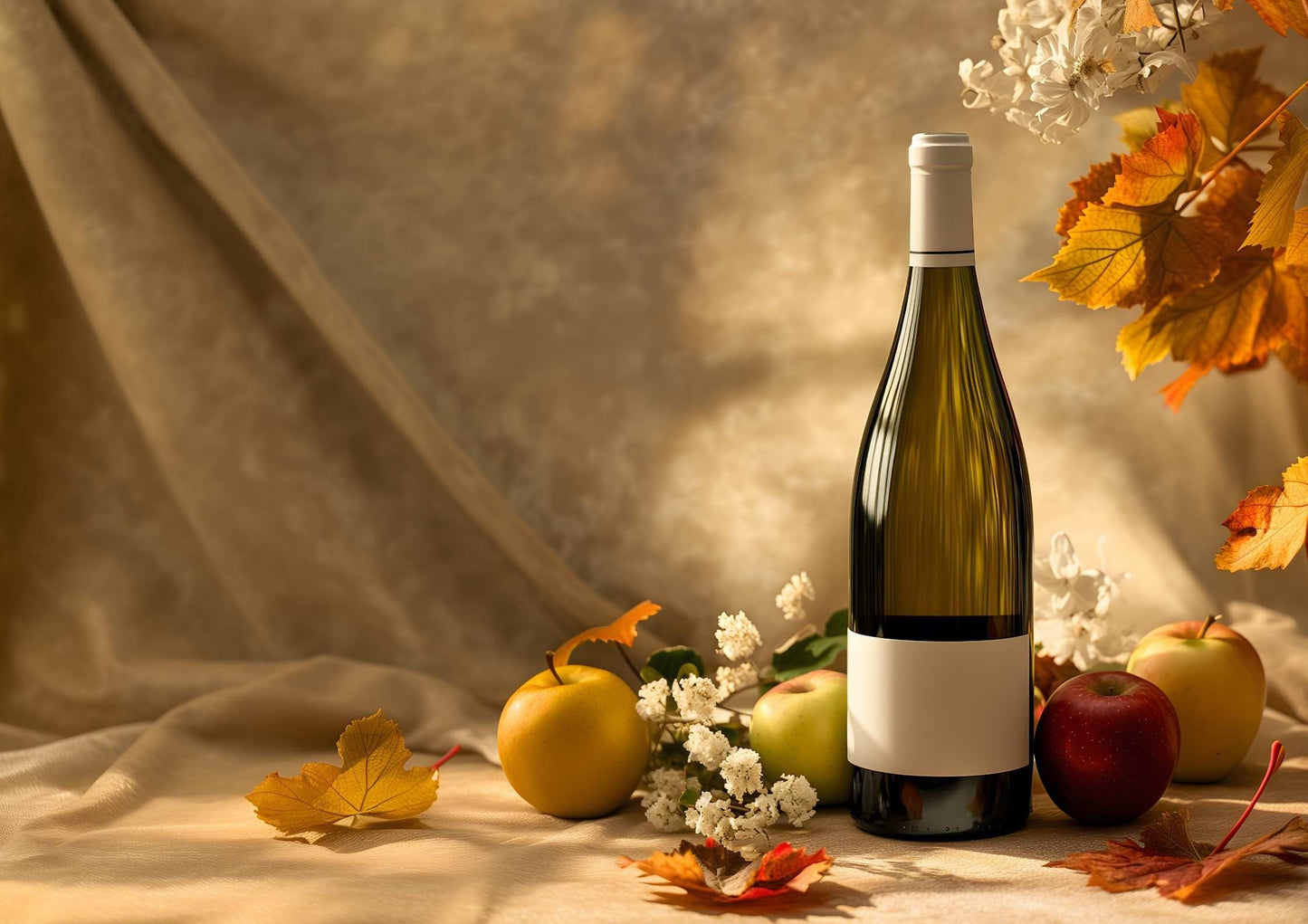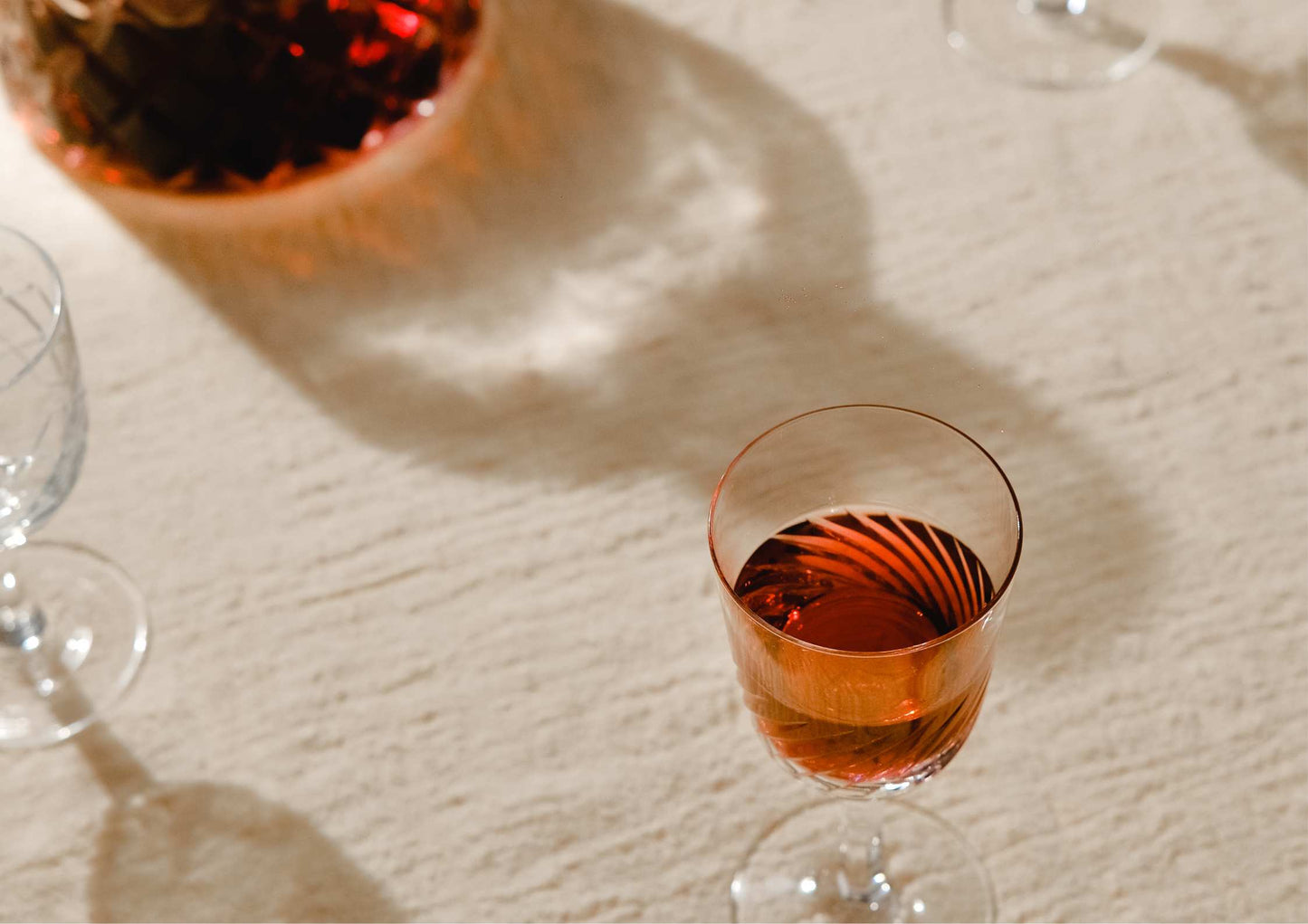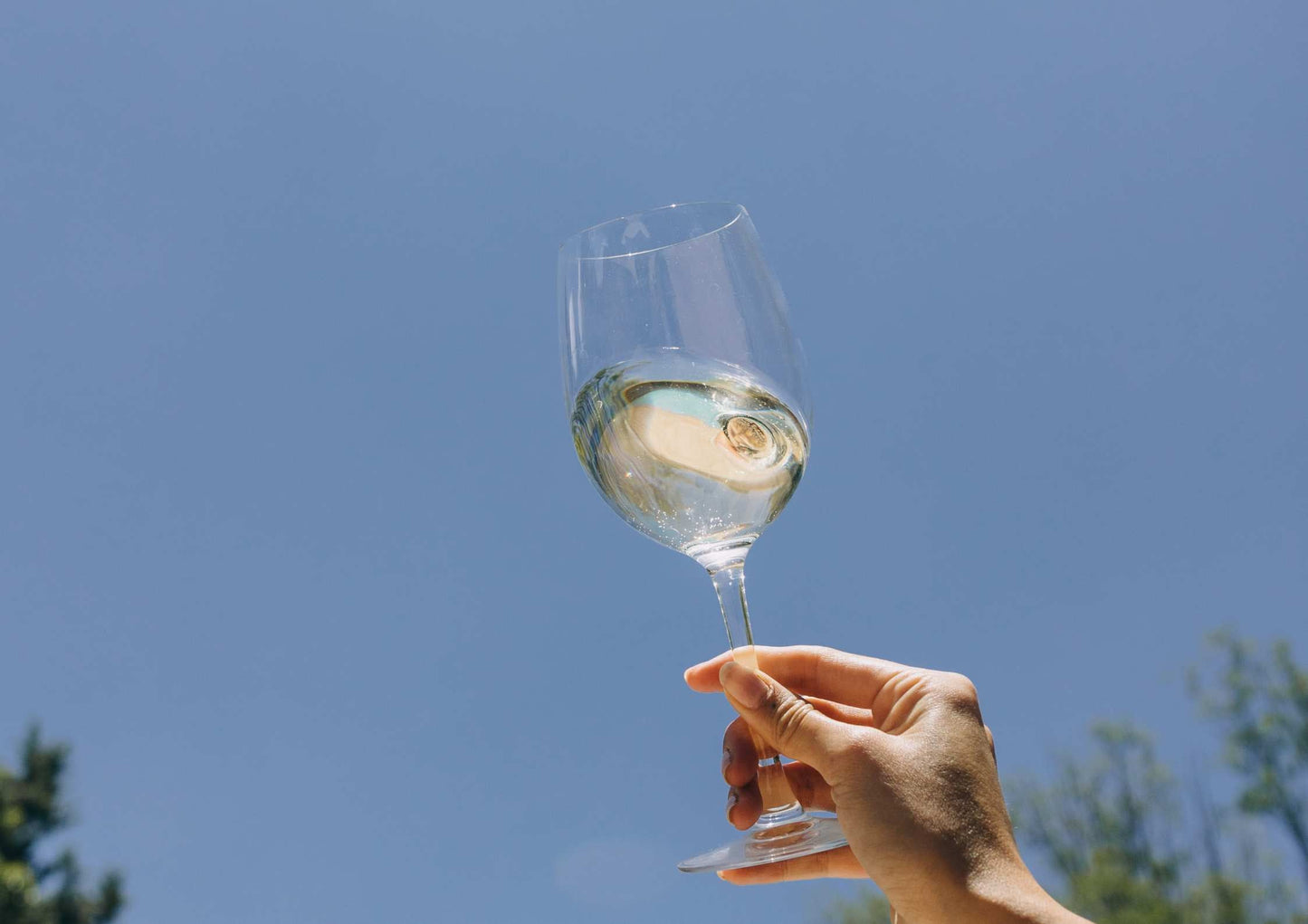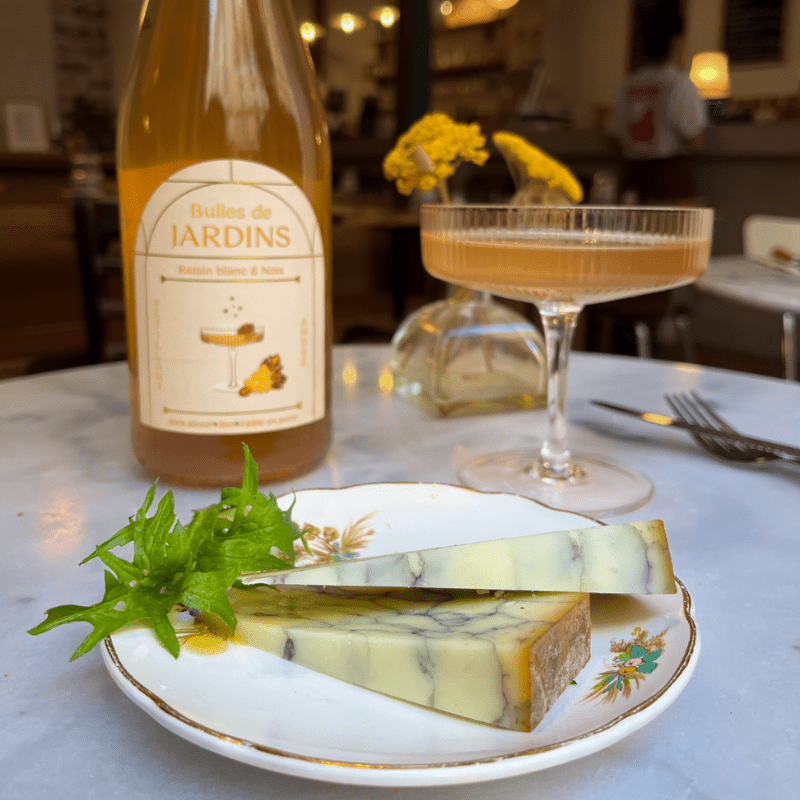
We tell you everything about alcohol-free wine
The world of wine is constantly evolving, and with it, new innovations are emerging. One such advancement is non-alcoholic wine . In this article, we will explore the secrets of its manufacture as well as the different types of alternatives available.
Some players try to imitate the taste of wine by making blends or by repeating its manufacturing process but limiting the alcohol by dealcoholizing it.
At Jardins, our aim is to reproduce the wine experience by drawing on the best that nature has to offer without seeking to reproduce a taste in an artificial way.
Manufacturing processes
Here are the different processes used by producers of alcohol-free wine:
1. Dealcoholization by distillation
It is one of the most common methods for producing non-alcoholic wine, patented in 1908 by Carl Jung, a German winemaker.
Dealcoholization occurs after the grapes have fermented. It involves a very precise mechanical distillation of the wine, allowing its individual components to be isolated and the alcohol to be separated from the rest of the liquid. The process can be carried out in two ways: either by partial evaporation under vacuum at high temperature , or at low temperature also under vacuum, but without heating. The low temperature method, carried out cold, has the advantage of minimizing the loss of aromas, because the wine is not subjected to an increase in temperature. Then, to restore the balance, natural aromas, infusions, or even grape must are added. These elements bring back structure and body, which can be altered when the alcohol is extracted.
However, according to European regulations, it is allowed to remove up to 2% of alcohol by this method. It is therefore important to emphasize that a dealcoholized wine still contains a certain amount of alcohol. This process is only allowed for country wines and table wines, but it is strictly forbidden for wines with a Controlled Designation of Origin (AOC) and a Protected Designation of Origin (PDO). In addition, dealcoholization is an energy-intensive and expensive process.
2. Dealcoholization by reverse osmosis
This method uses a semi-permeable membrane to separate the alcohol from the rest of the wine components. The wine is pressed through the membrane, which allows water molecules and flavor components to pass through, but retains the larger alcohol molecules. This results in a product with a significantly reduced alcohol content. Reverse osmosis takes place at low temperatures , further preserving the aromas and flavors of the wine. This technique has become very popular in the wine industry for the production of alcohol-free wines. It offers precise control over the percentage of alcohol removed, allowing producers to achieve very specific results based on their needs and preferences.
3. Stopping fermentation
This method occurs during the fermentation process. Typically, yeast converts the sugars in grape must into alcohol and carbon dioxide. In the case of non-alcoholic wine, fermentation is stopped before the amount of alcohol exceeds a certain threshold. One option is to chill the must , which has the effect of slowing down or stopping the activity of the yeast. Lowering the temperature slows down the rate at which the yeast can metabolize the sugars into alcohol. Another method involves adding chemical agents that kill the yeast. These compounds, when introduced into the must, inhibit the activity of the yeast and stop fermentation.
Garden Bubbles: An alternative to alcohol-free wine
There are a variety of non-alcoholic wines: white, red, rosé, sparkling… Their sometimes confusing taste can cause disappointment among informed wine lovers. Indeed, reproducing the characteristic taste of traditional wine in a non-alcoholic product can turn out to be a delicate quest , where the illusion of authenticity can sometimes be put to the test. This is largely due to the complexity of the aromas and flavors of the wine, which are the result of very specific fermentation and maturation processes.
Good news! At Jardins , our approach to creating beverages goes far beyond imitating traditional wine . We have consciously chosen not to try to reproduce what others are already doing. On the contrary, our ambition was to build a completely new experience , a taste adventure that is based on the very foundations of our terroir.
Our latest creation, Bulles de Jardins Raisin Blanc et Noix highlights the amber notes of white grapes for an authentic pleasure. Inspired by rich wine traditions, this creation subtly combines the freshness of white grapes with the depth of fresh walnuts. The result is a drink that evokes certain Jura wines , offering a unique sensory experience.
In addition, Bulles de Jardins Raisin Blanc et Noix lend themselves perfectly to refined culinary pairings . Their balanced and complex flavor profile makes them the ideal companion for a variety of dishes, such as a cheese platter . The subtle amber notes of the white grape blend harmoniously with the richness and texture of the cheeses, creating a perfect balance of flavors.
Discover our latest product White Grape Bubbles and Walnuts and choose an alternative that defies convention.


